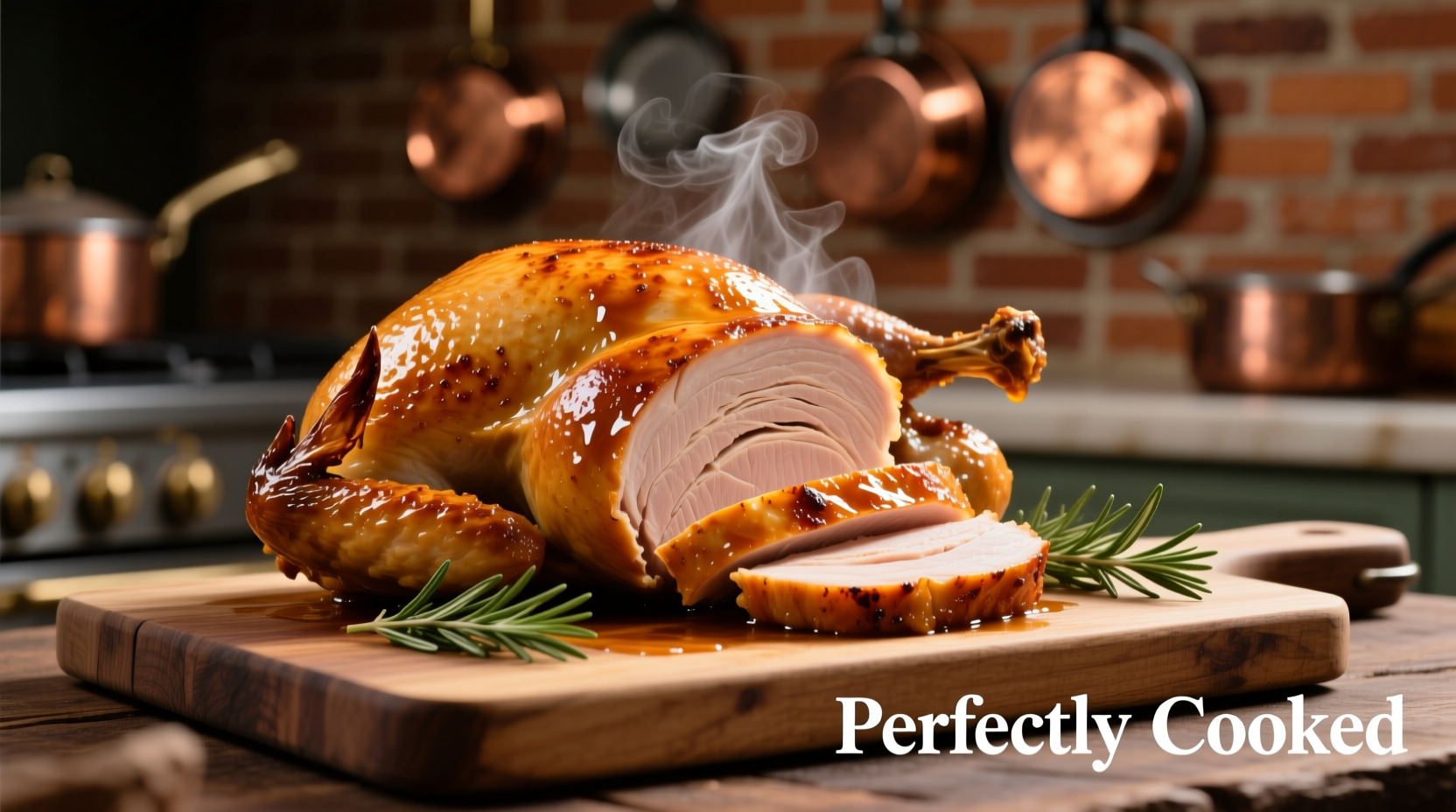Nothing ruins a special meal like dry, overcooked turkey or the risk of foodborne illness from undercooked poultry. Getting the temperature right for turkey breast balances safety with succulence—a challenge many home cooks face each holiday season. Let's break down exactly how to achieve perfect results every time.
Why Temperature Matters More Than Time
Cooking turkey breast isn't like baking cookies where time alone guarantees success. Variables like oven accuracy, starting temperature, and breast thickness dramatically impact cooking duration. The only reliable method to ensure safety and quality is using an instant-read thermometer.
According to the USDA Food Safety and Inspection Service, poultry must reach 165°F to eliminate pathogens like salmonella and campylobacter. This recommendation comes from decades of food safety research tracking bacterial death rates at various temperatures.
| Temperature | Bacterial Safety | Texture Result |
|---|---|---|
| 150°F (65.5°C) | Requires 2.8 minutes to kill bacteria | Moist but requires careful timing |
| 160°F (71.1°C) | Requires 15 seconds to kill bacteria | Acceptable moisture, slightly pink |
| 165°F (73.8°C) | Instant pathogen destruction | Safe standard, slight dryness risk |
This comparison shows why the USDA standardizes at 165°F—it provides an immediate safety margin without requiring precise timing calculations that most home cooks can't manage.
Your Step-by-Step Temperature Guide
Preparation Phase: Setting Up for Success
Begin with your turkey breast at refrigerator temperature (40°F or below). Pat dry thoroughly—moisture creates steam that impedes browning. Insert your thermometer probe into the thickest portion, avoiding bones. For best results, use an oven-safe probe thermometer that stays in during cooking.
Cooking Phase: Monitoring Critical Transitions
As your turkey breast cooks, watch these key temperature milestones:
- 100-120°F (38-49°C): Collagen begins breaking down—no action needed
- 130-140°F (54-60°C): Proteins start contracting—this is where moisture loss accelerates
- 150°F (65.5°C): Critical safety threshold begins—maintain for 2.8+ minutes if finishing sous vide
- 160°F (71.1°C): Pull point for experienced cooks using carryover cooking
- 165°F (73.8°C): USDA's instant-safe temperature—remove immediately

Resting Phase: The Hidden Temperature Shift
Never skip resting! During the 10-15 minute rest period, residual heat continues cooking the meat (carryover cooking). The internal temperature typically rises 5-10°F. This is why many professional chefs remove turkey at 160°F—the final temperature naturally reaches 165°F during resting.
Food scientist Dr. Antonio Rodriguez explains: "The resting period allows juices to redistribute throughout the meat. Cutting too soon releases those precious liquids onto your cutting board instead of staying in the meat where they belong."
Avoiding Common Temperature Mistakes
Mistake #1: Relying on Pop-Up Timers
These unreliable devices often trigger between 165-180°F, frequently resulting in overcooked, dry turkey. Always verify with a proper thermometer.
Mistake #2: Single-Point Temperature Check
Turkey breasts have varying thicknesses. Check multiple spots—the thickest portion near the bone often lags behind other areas. If any section reads below 165°F, continue cooking.
Mistake #3: Ignoring Oven Variability
Home ovens frequently vary by 25°F or more from their set temperature. Use an independent oven thermometer to verify actual cooking conditions.
Special Considerations for Different Cooking Methods
While 165°F remains the safety standard, cooking method affects your approach:
- Sous Vide: Cook at 145-150°F for 2+ hours, then sear—safe due to precise time/temperature control
- Smoking: Maintain smoker at 225-250°F; monitor breast temperature closely as smoke doesn't penetrate evenly
- Grilling: Use two-zone cooking; move to indirect heat when breast reaches 140°F to avoid flare-up overcooking
Remember that these alternative methods still require the final product to reach 165°F for conventional cooking safety. The USDA maintains this standard across all cooking techniques for traditional oven preparation.
Verifying Doneness Beyond Temperature
While thermometer readings are primary, these secondary indicators confirm proper cooking:
- Juices run clear (not pink) when pierced
- Meat feels firm but yielding (not rubbery)
- Thermometer inserted near bone reads same as thickest muscle portion
If your turkey breast reaches 165°F but seems dry, consider brining next time. A simple saltwater solution (1/4 cup salt per quart of water) for 4-12 hours improves moisture retention significantly.











 浙公网安备
33010002000092号
浙公网安备
33010002000092号 浙B2-20120091-4
浙B2-20120091-4